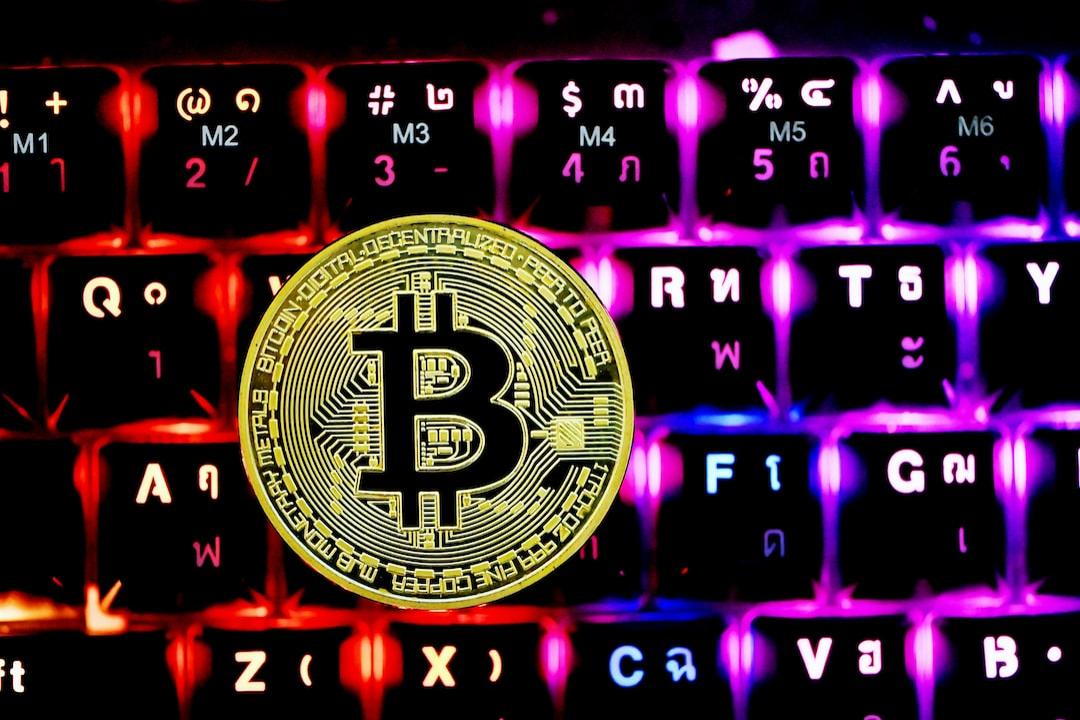Ethereum Rollups have become the franchising model of Web3 — they are autonomous platforms, strategic products, and programmable economies.
This article is based on the work of Alon Muroch, organized, compiled, and written by Deep Tide TechFlow.
(Background: 6 Valuation Methods: Can Ethereum Reach $10,000 This Time?)
(Context: Summary of Vitalik’s AMA: Are Rollups Good or Bloodsucking for Ethereum? What is the Ultimate Narrative of ETH? Progress on 3.0)
Welcome to the Era of McRollups.
Ethereum Rollups have become the franchising model of Web3 — they are autonomous platforms, strategic products, and programmable economies. In many ways, they embody a modern franchising model: independent yet aligned with the brand, interoperable yet built for specific purposes, flexible yet rooted in common standards.
Ethereum as the Franchisor
In this model, Ethereum acts like the headquarters of McDonald’s, serving as the franchisor that sets brand standards and core rules while providing the infrastructure to ensure scalability. This includes:
- Global ### finality achieved through Ethereum’s validator set
- A neutral and trustworthy settlement layer
- Standardized tools: Solidity, EVM, wallets, cross-chain bridges, RPC
- A vast developer ecosystem and trust foundation
Ethereum’s value lies not only in its technical aspects but also in its institutional and cultural dimensions. When Rollups connect to Layer 1, they inherit Ethereum’s “brand licensing.” The trust of users and builders derives from: Ethereum’s cryptographic technology + community consensus + decentralized values.
Rollups as Franchise Branches
Rollup operators are the franchisees, operating exclusive “on-chain stores” and customizing the environment while taking on operational responsibilities.
They can:
- Customize the execution environment: EVM, zkVM, WASM, or custom virtual machines
- Customize fee structures: 0 Gas experience, fiat-pegged pricing, rebate mechanisms
- Implement governance mechanisms: DAOs, multi-signatures, token voting, or social recovery
- Modify infrastructure: custom sorters, data availability layers (DA), cross-chain bridges, proof systems
- Expand suite features: identity layers, privacy precompiled contracts, AI agents, etc.
In short, Rollups are application-specific economies that fully control their execution environment while anchoring trust and interoperability to Ethereum.
Just like McDonald’s… Global McDonald’s stores maintain a unified identity but operate locally. The McDonald’s in Rome adopts a black-gold aesthetic to match ancient architecture; the McDonald’s in India offers spicy cheese wraps; in France, one can enjoy espresso and macarons at McDonald’s.
Similarly:
- DeFi Rollup: Completely eliminates gas fees + high-frequency trading optimization
- Game Rollup: Utilizes WASM for real-time logic and user experience abstraction
- Social Rollup: Focuses on throughput, on-chain messaging, and identity
These are the “McRollups” — adhering to Ethereum’s standards, settling back to Ethereum’s base layer, and interoperating through shared protocols.
Technical Insight: The Application Boundaries of zkTLS Extend Beyond “Resume Verification”
Rollups as Products
Operating a Rollup ≠ deploying a smart contract — it is essentially like launching a company, or more accurately, a full-stack SaaS platform:
- Managing normal uptime: sorters, data availability (DA), proofs, node activity
- Recruiting developers: building SDKs, writing documentation, establishing ecosystem funds
- Supporting users: wallets, block explorers, support processes, fiat deposit channels
- Controlling the economy: gas tokens, cross-chain bridge fees, MEV fees, governance mechanisms
The most successful Rollup teams will view it as a business — a vertically integrated entity (store + backend + distribution channels + monetization engine) that is composable yet optimized for users.
The Power of Shared Infrastructure
The autonomy of Rollups relies on the collaborative synergy of the Ethereum ecosystem:
- Standardized cross-chain bridges → interoperability standardization
- Shared sorting layers (e.g., Superchain, AggLayer, Espresso) → atomic-level cross-chain interaction
- DA networks (e.g., EigenDA, Celestia) → cost reduction while maintaining Ethereum consistency
- Unified toolchains → developers do not need to start from scratch
This achieves a seamless user experience — if synchronous composability is realized, accounts, assets, and identities can transfer across Rollups just as they would within a single chain.
Synchronous Composability: Ethereum’s Strategic Imperative
If Rollups are franchise stores, then synchronous composability is the logistics, coordination, and communications network that transforms them from isolated branches into a unified global value chain. Without it, Rollups, while powerful, would become fragmented; with it, they will evolve into a tightly connected, interoperable network of programmable economies.
What is Synchronous Composability?
Synchronous composability allows smart contracts on different Rollups to interact within a single transactional context — in an atomic and deterministic manner. Simply put:
- Contract A on Rollup A can call Contract B on Rollup B and return results instantly
- Users can perform cross-chain operations as if on a single chain
- Developers do not need to design asynchronous bridges
It transforms Rollups into modular components of a unified system rather than isolated chains pieced together by cross-chain bridges.
Without Synchronous Composability
- Rollups become economic islands
- Liquidity fragmentation
- Users encounter cumbersome cross-chain operations
- Developers are forced to adopt asynchronous processes
- dApps lose atomic logic
This could undermine Ethereum’s superpower: seamless composability.
With Synchronous Composability
- Contracts interact instantly across Rollups
- Cross-domain flash loans / DAOs become simple
- Liquidity flows freely
- Users experience cross-domain operations seamlessly
- Ethereum becomes a multi-style single chain
Synchronous composability not only enhances the experience but also unlocks entirely new types of decentralized applications that otherwise would not be possible.
How Synchronous Composability Works (Underlying Mechanisms)
- Shared coordination networks: deterministically ordering transactions across multiple Rollups (e.g., Optimism Superchain, Espresso, Astria)
- Shared data availability layers: Rollups release and consume data from a common source, ensuring visibility across all chains (e.g., EigenDA, Celestia)
- Standardized messaging layers: support for atomic, secure, verifiable cross-chain messaging
- Ethereum settlement: all Rollups ultimately settle to Ethereum, where finality, data validity, and dispute resolution converge
These components collectively establish a unified execution context among autonomous Rollups.
Real-World Use Cases
- DeFi Arbitrage: Borrow on Rollup A → Trade on Rollup B → Repay (completed in a single transaction)
- Cross-Rollup NFT: Mint on Chain A → Game on Chain B → Trade on Chain C (instant completion)
- Cross-domain DAOs: Proposals/Execution spanning multiple Rollups (treasury operations + governance logic)
- Unified entry: Users experience seamless cross-chain interaction
The Dangers of Lacking Synchronous Composability: The Centrifugal Risk of Rollups
As Rollups grow in user base, capital, and brand influence, unless Ethereum provides the infrastructure to maintain their composability, their motivation to remain aligned with Ethereum will weaken.
Rollup Escape Trajectory
Without synchronous composability, Ethereum risks losing the Rollups it helped to launch. As these Rollups mature — accumulating users, liquidity, and developer attention — they become increasingly self-sufficient. Their reliance on Ethereum’s base layer diminishes.
To some extent, the following logic becomes persuasive:
“If we cannot benefit from shared liquidity or shared execution, why continue to bear Ethereum’s finality costs?”
This is the escape path. As more Rollups reach this threshold, they may:
- Build full-stack solutions (sorters / DA / cross-chain bridges)
- Anchor to alternative settlement layers
- Prioritize vertical integration
With each Rollup that exits, Ethereum’s network effects weaken. Lacking composability, Ethereum will cease to be the connective organization of Web3 and may devolve into another Layer 1, while Rollups evolve into cloud platforms — autonomous, isolated, and increasingly indifferent to Ethereum’s future.
Synchronous Composability = Ethereum’s Economic Defense Layer
The core of Ethereum retaining Rollups is to provide irreplaceable collaborative value:
- Shared liquidity → stronger markets
- Shared user experience → higher retention
- Shared infrastructure → faster development
- Shared state → deeper integration
This mirrors the network effects of Web2: the stronger the composability of Rollups, the more attractive the entire ecosystem becomes.
In Conclusion
Ethereum Rollups are not just Layer 2s. They are economic zones of franchising, where founders become platform operators, and users become citizens of autonomous and interconnected digital nations. They:
- Possess logical autonomy
- Are customizable in user experience
- Monetize sorting and infrastructure
- Remain aligned with Ethereum’s finality and values
This is not merely “your application, your chain,” but rather, on the trajectory based on Ethereum, it is your chain, market, and economy.
Welcome to the Era of McRollups.


